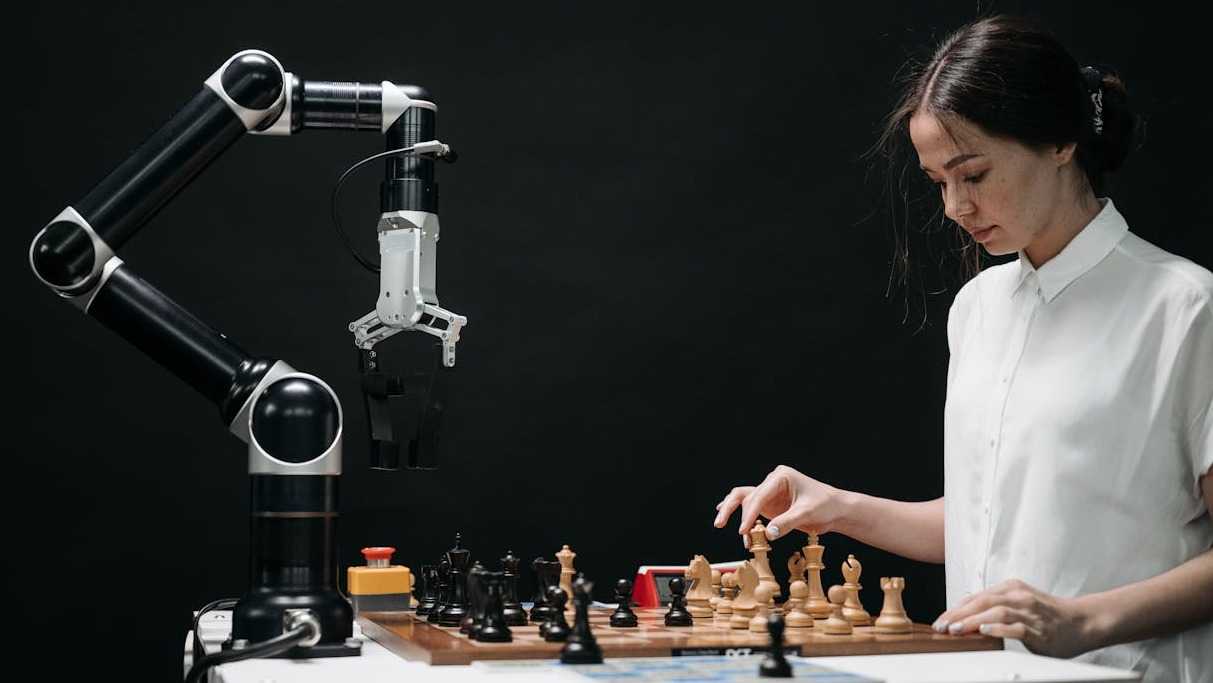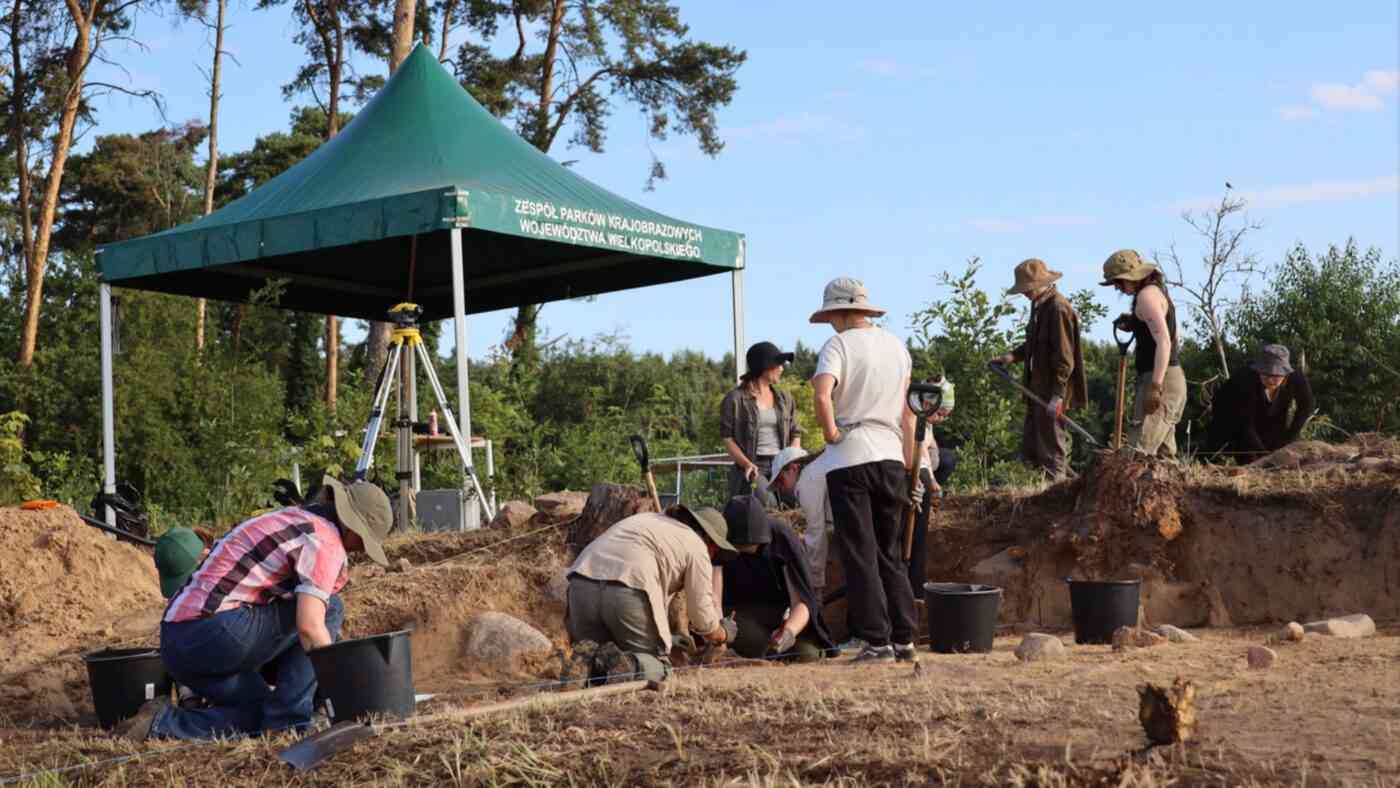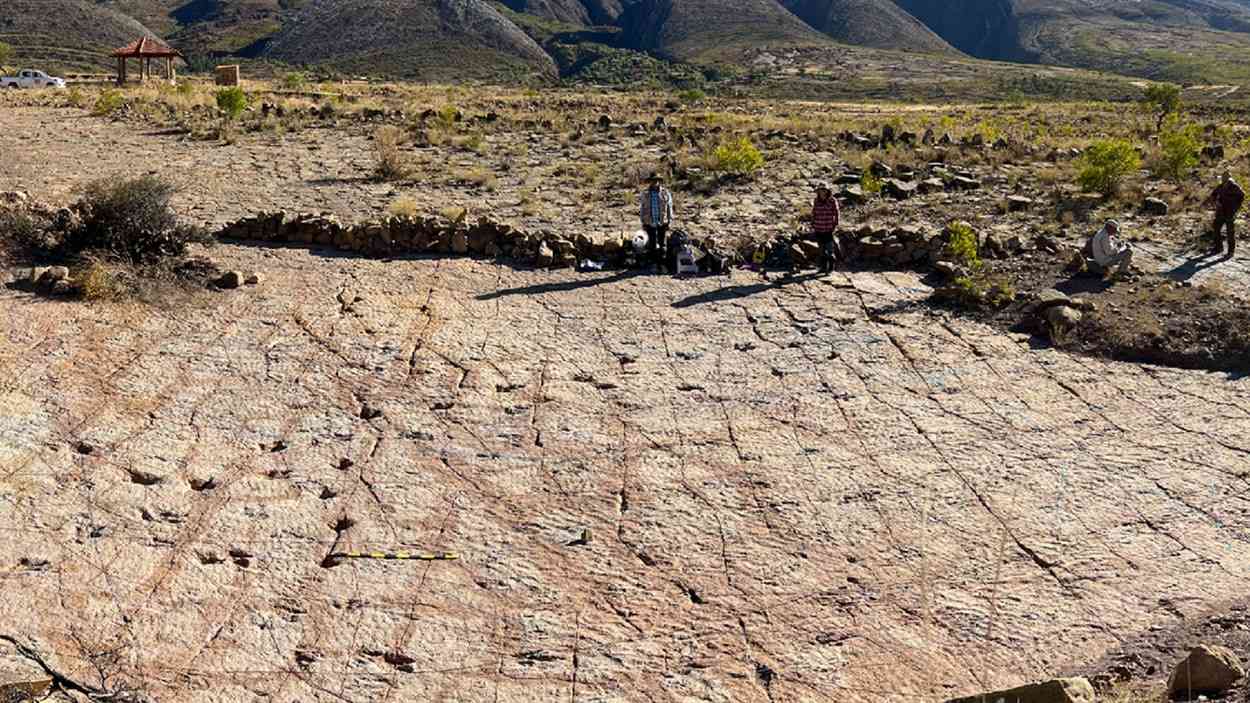Science
From the “Polish Pyramids” to Egypt: Discoveries That Defined 2025
30 December 2025

Historical transformations occur in abrupt shifts. Sometimes a few years are enough to reshape the civilizational, social, cultural, or political landscape of an era. Napoleon’s reign completely altered Europe, as did World War I. The digital revolution, initiated in the latter half of the 20th century, had a similar impact. Yet, why do such changes occur at specific times? And why does the burst of genius that drives them emerge in certain places rather than others?
Consider ancient Athens, Renaissance Florence, early 20th-century Vienna, or today’s Silicon Valley. These locales have witnessed an extraordinary concentration of exceptionally talented individuals capable of groundbreaking achievements. What factors determined this phenomenon?
The fluctuation of genius across time and space is hardly a matter of chance. Exceptional personalities emerge under specific conditions, and when there are enough sages, they precipitate groundbreaking discoveries and works, “moving the world off its axis.” Brilliant minds yield a record harvest of new ideas.
The occurrence of such a favorable situation for human development does not have a single cause. Genetic predispositions of a given group, favorable economic conditions, good climate, or substantial financial resources are not sufficient on their own. These, along with other factors, contribute to the formation of clusters of genius. One of the first such centers was ancient Athens.
This city-state, which was the intellectual hub of Greece and radiated influence across the world, reached its zenith in the 5th and 4th centuries BCE. The flourishing occurred after the introduction of democracy – it was then that philosophy, literature, architecture, and sculpture developed remarkably. Famous thinkers and artists flourished there: Aeschylus, Sophocles, Herodotus, Euripides, Socrates, and Phidias, among others. The Athenian politician Pericles contributed to the city’s expansion (the Acropolis was built as a place of worship for Greek gods) and reduced social disparities.
What else determined this flourishing? The Mediterranean climate sharpened the minds of the ancients, but this explanation is insufficient – after all, it is similar today as it was in 450 BCE, yet Greece does not lead the world. The omnipresent wine? They diluted it heavily. The Athenians’ fondness for walking and spending time outdoors? Contemporary doctors applaud these arguments. Recent studies by psychologists from Stanford University confirm that walkers experience a “consistent and significant” increase in creativity levels.
We recommend: The Fantasy Crisis. What Is Missing in Today’s Fictional World Productions?
A key feature of ancient Athens was open debate. Freedom of speech prevailed, with orators addressing crowds of thousands at public assemblies, demanding erudition, education, and oratorical skills. No topic was off-limits: discussions could begin with mundane issues like drinking water or grain supplies and end with philosophy.
The Greeks adored poetry and participated in recitation contests. These displays were facilitated by the city’s openness to the world: merchants from Egypt, Mesopotamia, and beyond arrived at the port of Piraeus. This enabled the exchange of experiences, with Athenians eagerly absorbing new ideas. One might conclude that they did not invent much themselves, having borrowed the alphabet from the Phoenicians, medicine and sculpture from the Egyptians, mathematics from the Babylonians, literature from the Sumerians, and so on. The Greeks’ merit lay in assimilating and developing these ideas, “Athenizing” them. Modern psychologists confirm that openness to others’ experiences is a trait of creative individuals.

A leap similar to Athens – though more related to technological progress – occurred in early medieval Hangzhou (then called Lin’an) in China. This gradual breakthrough, spanning over two centuries, was associated with the Song dynasty’s rule from 960 to 1279. The regime was the world’s first to issue paper money, establish a navy, use gunpowder, and more.
The Chinese produced the world’s finest textiles and porcelain, built massive sailboats accommodating 500 people, created sea maps, conducted archaeological excavations, and used hydraulic machines for coal mining, among other achievements.
Hangzhou’s harmonious development was determined by factors both similar to and distinct from those in Athens, such as the refinement of technological innovations with government support. This led to the proliferation of woodblock printing – the “internet of those times” – significantly broadening the audience for literature.
Another example of genius accumulation occurred in Renaissance Florence. The city, ruled by the Medici family – neither the largest nor the wealthiest in Europe – managed to reach great heights at the turn of the 15th and 16th centuries. It concentrated the greatest minds of the era: Leonardo da Vinci, Michelangelo, Botticelli, and Rosselli, among others, created there. In this case, money played a crucial role – the florin, the first international currency, recognized from London to Cairo. Wealthy merchants who had profited from trade financed paintings, sculptures, houses, and palaces.
The Medici, as patrons of science and art, had plenty to choose from – Greek scholars, and refugees from conquered Byzantium, flocked to the city. They could peacefully study ancient manuscripts brought from Alexandria and elsewhere. The powerful patrons set no requirements – they relied on creative freedom, inspired by ancient models.
Creative debate played a significant role – artists, while admiring the ancient Greeks, adapted their ideas to the needs of their era. For instance, contrary to Greek views, they looked favorably upon profiting from capital (after all, they lived off this money). Besides the extraordinary development of art, the Italian Renaissance also brought about innovations such as insurance and bookkeeping.
We recommend: How to Design Cities? Urban Planning Beyond Human Inhabitants
The practical dimension of genius manifested itself in 18th-century Edinburgh, Scotland. In this foggy, damp city, hastily dubbed the “Athens of the North,” a quantum leap occurred in chemistry, geology, engineering, economics, sociology, philosophy, and even poetry. Thanks to the practical Scots, we now use encyclopedias and calendars, flush toilets, use refrigerators, ride bicycles, and more.
Many breakthrough inventions of the era arose from practical needs. James Small invented a new plow model to increase yields in areas where only 10% of the land was arable. Physicians sought to improve human life through groundbreaking advice such as the necessity of hand-washing before medical procedures (William Buchan’s postulate) or eating citrus fruits to prevent scurvy (James Lind’s recommendation).
The greatest Enlightenment philosopher, David Hume, advocated deriving knowledge from experience. As a declared empiricist, he was consistent in asserting that it is erroneous to assume all people will die just because everyone has died so far. When his friend Adam Smith – a precursor of economics, capitalism, and free markets – lay on his deathbed in 1790, he reportedly whispered, “I believe we must adjourn this meeting to another place.” This statement encapsulated everything: inspiration from Hume, Enlightenment optimism, and… Scottish detachment.

Two other cities where breakthrough discoveries for humanity accumulated were Calcutta and Vienna. Though geographically distant, they share a mix of influences from many cultures. Turn-of-the-century Calcutta was distinguished by a combination of folk Hindu genius and Western sensibility. New ideas germinated there – fingerprints were used in criminal investigations, sewage systems and gas lamps were introduced (earlier than in Manchester, for instance).
In science, physicist Satyendra Nath Bose, a collaborator of Albert Einstein, propounded groundbreaking theories – he was the first to admit that “it is difficult to draw a line between physical and physiological phenomena.” He thus extended a bridge between the rational tradition of European thought and Hindu mysticism.
Calcutta was characterized by considerable chaos. Chaos, in particular situations – according to neurologist Walter Freeman – is an essential component of creativity. A creative person does not perceive it as an abyss but as a mine of knowledge.
Somewhat similar conditions existed simultaneously in Vienna, where psychoanalysis theory, among others, was born. But Sigmund Freud is not the only symbol of this multicultural metropolis; others who thrived here include analytical philosophy founder Ludwig Wittgenstein, artist Gustav Klimt, writer Stefan Zweig, and physicist Ernst Mach. They met in Viennese coffeehouses, fueling an atmosphere of uninhibited discussions.
The liberal system of the Austro-Hungarian Monarchy ensured rights for representatives of many nations – different faiths, languages, and traditions intersected. The German language became convenient for creating new philosophical theories – it was easy to invent new words in it, which is more challenging in English, for example.
We recommend: The Dark Side of Sport. When Physical Activity Harms
The contemporary cluster of genius is most easily discerned in California’s Silicon Valley. But is the birthplace of the first iPhones comparable to the previously mentioned locations? After all, it is just a device that makes life easier, but is it truly groundbreaking?
On the other hand, it is thanks to Silicon Valley’s inventions that the ways people communicate have changed dramatically. Not only “how” we converse, but also “what we talk about.”
Silicon Valley is just ordinary suburbs, lacking Florence’s elegance or Vienna’s chic. It arose from nothing in the desert. Without a deep-rooted culture, this place was conceived from scratch in the mid-20th century. Unburdened by cultural baggage, creators could, based on American optimism, change reality. Moreover, profit handsomely from it. Young graduates, consuming massive amounts of coffee, tossed bold ideas during “brainstorming” sessions. Projects are hatched, followed by their applications, such as apps or programs, and then finished products.
In each place where geniuses congregated, a special atmosphere prevailed, which can be described as creative tension. Sometimes, as in Calcutta, chaos fostered it. Sometimes, as in Florence, harmony did. But in analyzing these places – points on a map – let us not forget that the most crucial element remained human.
Human genius usually begins with observation. What distinguishes creative genius from mere talent is not knowledge or intelligence, but the ability to perceive. The German philosopher Arthur Schopenhauer, a citizen of the First Polish Republic born in Gdańsk, aptly put it: “Talent hits a target no one else can hit; genius hits a target no one else can see.”
Translation: Klaudia Tarasiewicz
Read the text in Polish: Przepis na genialność: jak zwykłe miasta zapewniły niezwykły rozwój

Humanism
30 December 2025


Zmień tryb na ciemny